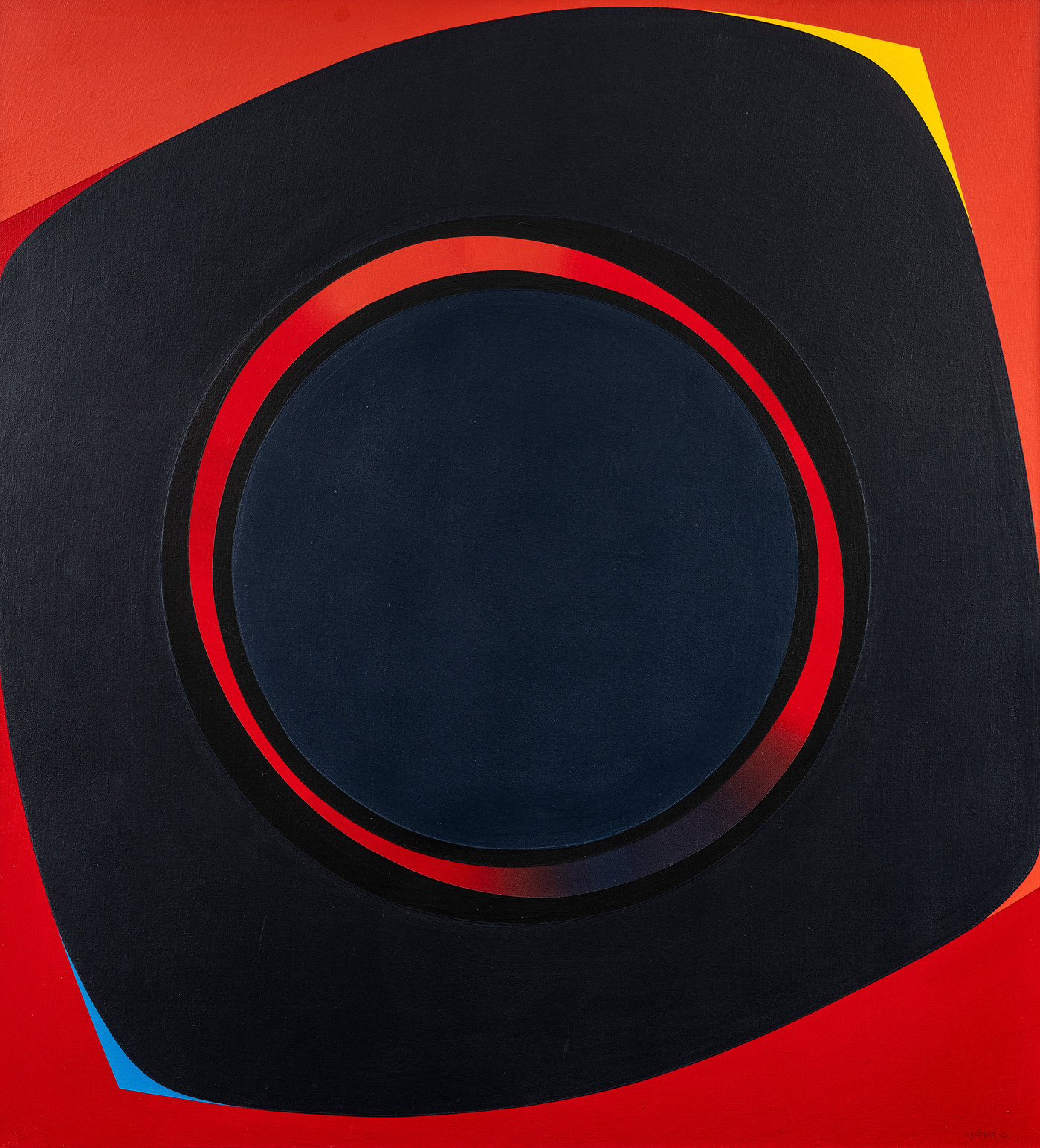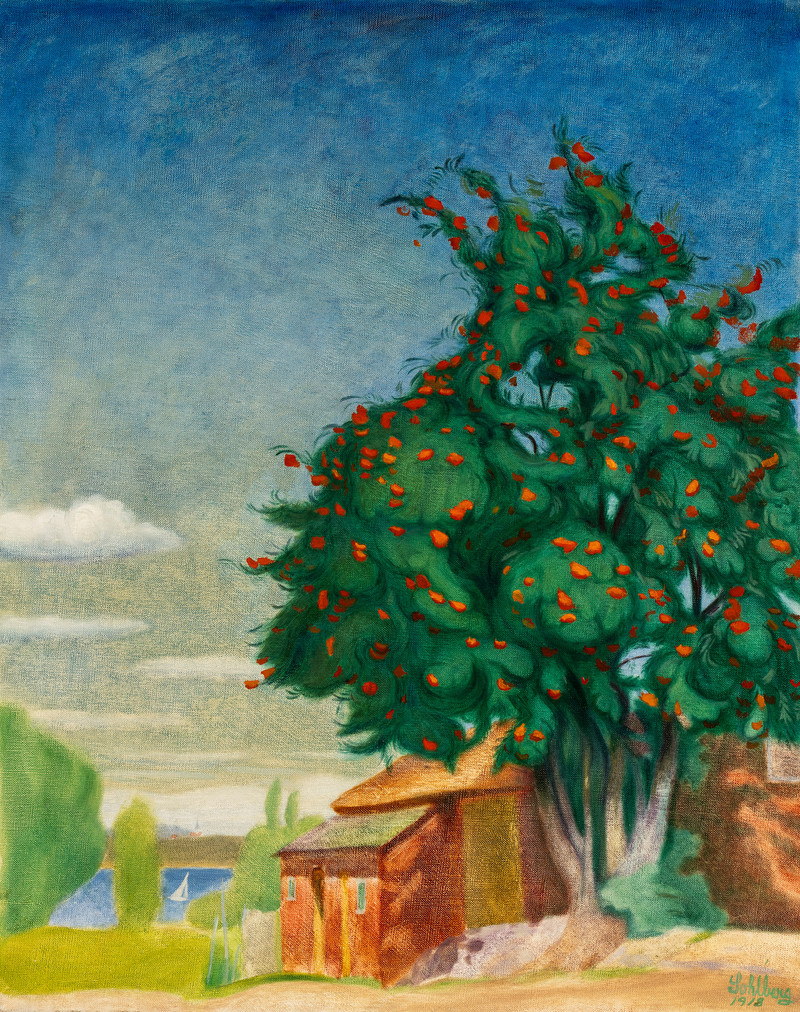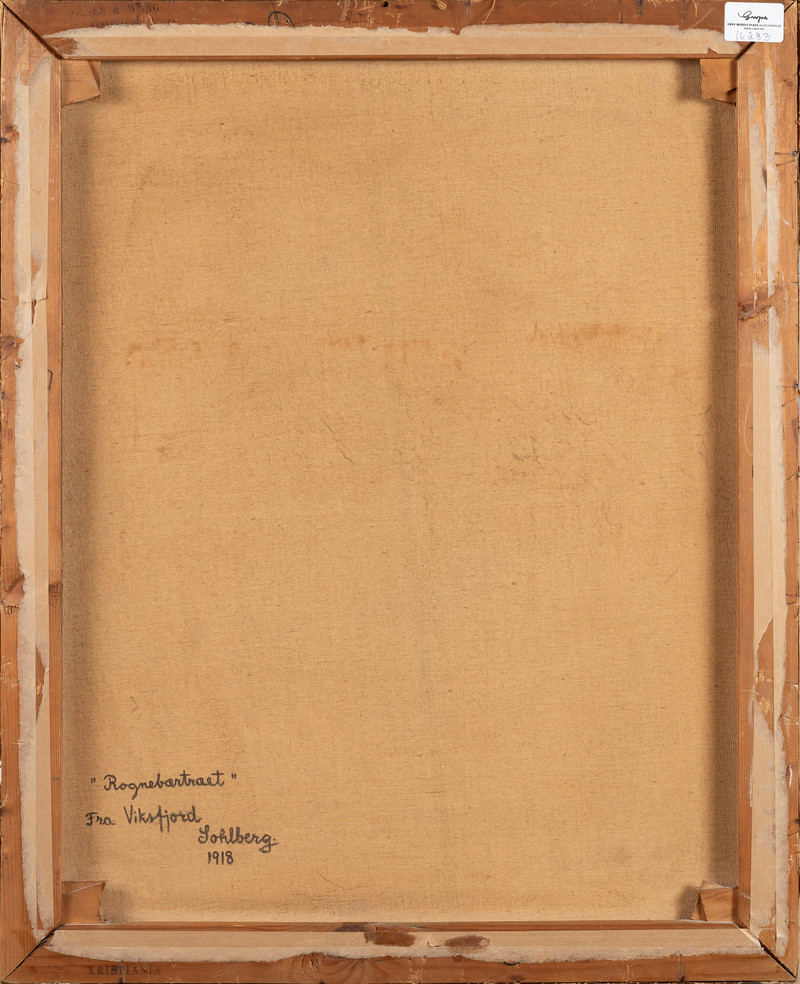In the summer of 1918, Harald Sohlberg had found his way down to the coastal landscape in Vestfold. The artist who earlier had devoted himself to the intellectual city-view, found inspiration in the period of 1912 to1916 in the pastoral landscapes of Ås. By the summer of 1918, Sohlberg turned his gaze towards the sunny coast.
The prelude to the shape and color expression we see in the images from this summer has its origins from the earlier images from Ås, where both form and color appeared as equal partners. The landscape pictures in this period show how he imposes a specific function, meaning and narrative on each individual element in the structure of the motif.
During the period at Ås, Sohlberg sought a new entrance into landscape painting, and stated how much his stay in rural surroundings influenced his artistic vision:
"With all the years I have now lived among farmers, it has brought me to see other sides of nature, other than the decorative one, namely the landscape building".
The quote tells us about an artist who no longer only sees nature as a mood-creating motif but relates to the structure and form of the real landscape. At the same time, with his own attitude to a principle of style, it was impossible to put aside a transfer of nature to the canvas without giving it a personal interpretation. One can say that in Sohlberg´s case, nature appears on the canvas in line with the real world but seen through an intellectual and systematized use of form and color. Sohlberg's use of the word landscape building in the quote, tells us that he sees nature a construction based up on a linear system, where each structure rests in and against another.
This idea is possibly best known through Paul Gauguin's approach to the landscape, and we see his influence on Sohlberg already present from 1892. This influence is strengthened throughout the coming years, and when the National Gallery in Oslo exhibited Gauguin in 1912, it confirmed Sohlberg's position among his contemporary Norwegian colleagues. In the summer of 1918, this style had escalated, much due to a more expressive color palette and use of contrasts.
The challenge with this stylistic development is the possibility that the decorative and flat-oriented motif takes over, thus removing the landscape from its naturalistic shape. The ultimate consequence is that the subject is experienced as abnormal to the viewer, created through abstraction. But Sohlberg manages to balance this, by distinguishing between the motif's decorative means and the landscape itself. Sohlberg's approach is strongly rooted in his own gaze, where the motif is organized based on the visual experience that is true to the motif´s own natural structure. Sohlberg only partly makes use of the decorative style, without abandoning what we know as nature's uniqueness. This is achieved through careful observation of the subject in question and the place he wants to paint, and then moderately stylizes it.
Particularly typical of the summer motifs from Skjeggestad by the Viksfjord in Vestfold from 1918 is how Sohlberg now also cultivates the effect of the sun on the color. He´s left behind his former melancholic motifs in the evening light, and paints this summer a total of seven pictures, two of which are in a larger format. Professor Øyvind Storm-Bjerke refers to these paintings in "Harald Sohlberg: the painter of loneliness" (1991), as a praise of nature. These strong words place Sohlberg on the agenda as a painter in touch with his own time. In the interwar period, vitalism flourished in art and literature internationally, and Sohlberg sunny paintings place him at head of this movement with the paintings from 1918, as a tribute to the life force that resides in nature and humans, through nature's own power and materiality.


